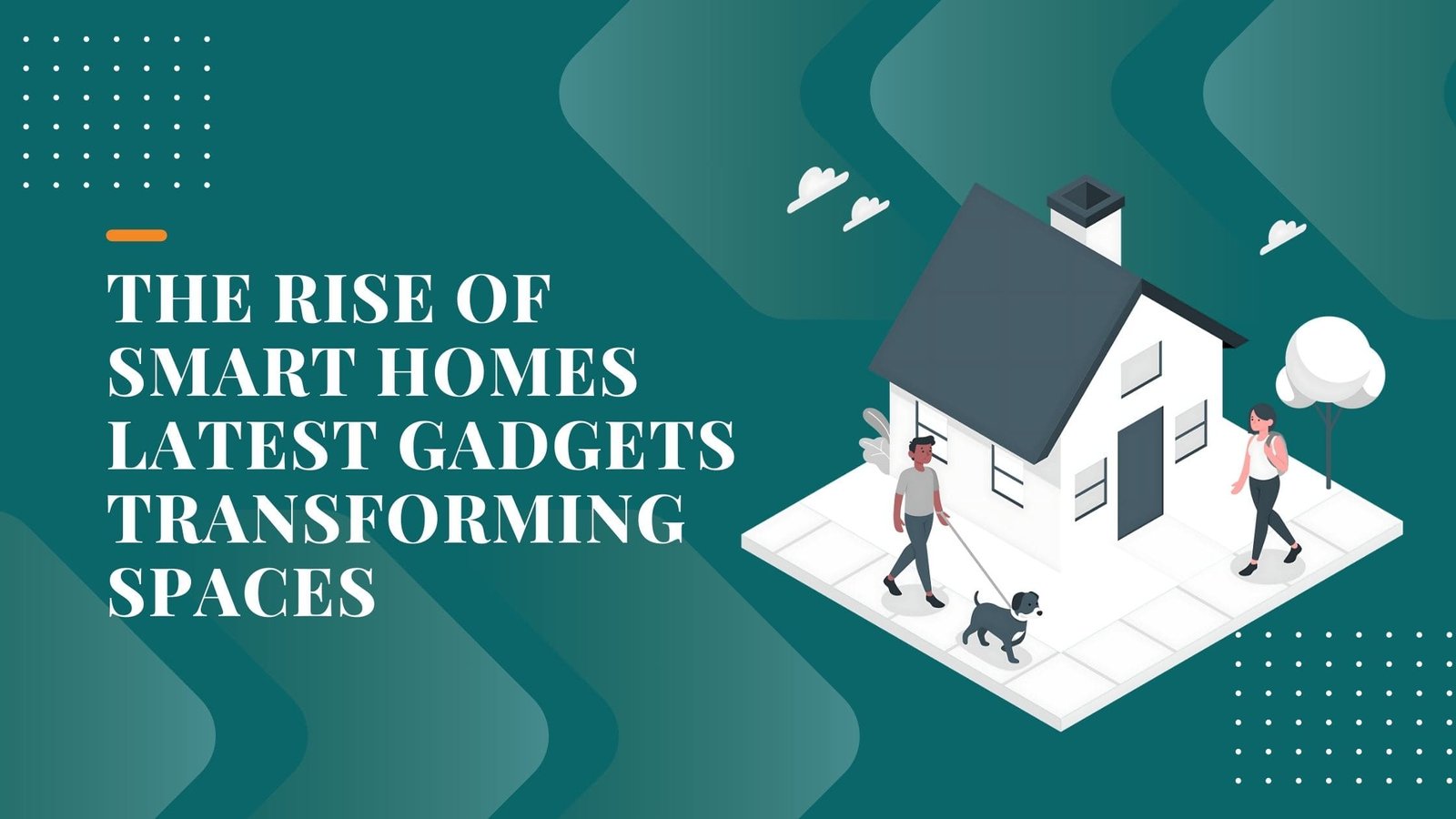
04/02/2025

The idea of a “smart home” has transformed over the last ten years from a sci-fi dream to a real-world entity. Fundamentally, a smart home is a dwelling that has networked gadgets installed that enable automation and remote control of home automation systems. This transition started with simple systems that made it possible for basic operations and has progressed to include a vast range of complex devices that fit in perfectly with day-to-day activities.
A key development in this evolution has been the emergence of the Internet of Things (IoT). The Internet of Things (IoT) is the term used to describe how commonplace things are connected to each other so they can exchange data. This translates to unmatched ease and efficiency in modern living spaces as everything from lighting to security systems can be monitored and controlled remotely. The functionality of smart home appliances has developed along with IoT technology, making them more user-friendly and available to consumers.
Present patterns indicate a move toward smart home technology that is more user-focused and integrated. Smart device adaptability is being improved by the incorporation of innovations like artificial intelligence (AI). Predictive analytics is currently a feature of home automation systems, which learns user preferences to optimize home management in previously unthinkable ways.
The days of just turning a switch to turn on illumination are long gone. A variety of options are available in modern intelligent lighting systems to meet the needs of ambiance and functionality. With the help of voice commands or smartphone apps, these systems’ exact control over brightness, color temperature, and scheduling is made possible. Advanced capabilities include presence recognition, which turns lights on and off based on room occupancy, and adaptive lighting, which modifies based on natural light levels.
Modern thermostats are the perfect combination of efficiency and ease of use. In addition to letting users control temperature remotely, these gadgets can optimize heating and cooling schedules by learning from user behavior. Modern thermostats have the ability to drastically cut energy usage, which results in cost savings and a smaller carbon impact, by monitoring trends and environmental conditions. With the use of features like geofencing, the thermostat may automatically modify its settings to provide a suitable home environment dependent on the user’s location.
The protection of homes has been radically changed by the development of smart security systems. Modern smart security cameras have features like facial recognition, real-time alerts, and high resolution video feeds. Users can receive notifications on their cellphones in the event that suspicious activity is discovered thanks to integration with other smart devices. To further improve general security and peace of mind, some systems additionally use sophisticated analytics, such motion detection and pattern recognition, to distinguish between routine and perhaps worrying events.
A smart home’s central nervous system consists of voice assistants and smart hubs. These gadgets allow consumers to use centralized app interfaces or straightforward voice commands to operate many smart devices. Voice assistants, such as Google Assistant and Amazon Alexa, have advanced in sophistication and can now support an ever-widening range of third-party integrations and features. Conversely, smart hubs serve as a single point of control for disparate smart devices, facilitating communication and ensuring that they all work together seamlessly.
Smart devices make a big difference in energy efficiency. Smart lighting systems and thermostats are two examples of devices that lower energy use by modifying settings in response to usage trends and ambient conditions. This promotes environmental sustainability in addition to lowering utility expenditures. A greener lifestyle is greatly aided by smart home technology, which reduces waste and maximizes resource consumption.
One of the most attractive features of smart home technology is the automation of everyday operations. Automated blinds, smart refrigerators, and voice-activated entertainment systems are examples of devices that simplify daily tasks, saving time and labor. Users can easily customize their living environments to suit their preferences thanks to the ease of use of remote control and programmable settings, which improve everyday comfort.
Smart technology is integrated into home security systems to offer better security and peace of mind. Instant notifications and real-time monitoring make sure homeowners are always aware of possible security breaches. Users may monitor their home’s condition from anywhere with the use of sophisticated features like video streaming and remote access, which makes it simpler to handle crises and keep a safe living space.
Living smoothly is made possible by the way other technologies and smart home appliances work together. Integration with health monitoring systems, wearable technology, and even smart cars produces a unified ecosystem in which every component functions as a whole. By allowing consumers to handle multiple facets of their lives via a single interface, this integrated approach improves overall usefulness and efficiency.
Living smoothly is made possible by the way other technologies and smart home appliances work together. Integration with health monitoring systems, wearable technology, and even smart cars produces a unified ecosystem in which every component functions as a whole. By allowing consumers to handle multiple facets of their lives via a single interface, this integrated approach improves overall usefulness and efficiency.
Among the most important benefits of smart home technology are increased safety and security. Modern monitoring systems enable households to be aware of any risks by providing real-time information and alarms. Homes are safeguarded against crises and break-ins with features like motion detection, video surveillance, and remote access.
Due to its ability to adjust to individual routines and preferences, smart home appliances provide a personalized living experience. Comfort and convenience are increased by the automation of functions including entertainment systems, lighting, and temperature control. A personalized and comfortable living environment is ensured by the capability to change configurations and operate equipment from a distance.
Smart home technology’s versatility makes sure that houses stay up to date with new developments in technology. Updates and upgrades can be made continuously because to the flexibility to integrate with new hardware and operating systems. The ability of smart home technology to adapt to new developments means that houses can change with them.
One of the main disadvantages of smart home technology is privacy issues. Smart gadgets gather enormous amounts of data, which makes them susceptible to misuse and security breaches. Maintaining user trust and privacy requires addressing crucial concerns including ensuring strong data security measures and protecting personal information.
When combining many smart devices into a coherent system, compatibility problems may occur. Functionality and performance discrepancies may result from disparate manufacturers and standards. To ensure a seamless and effective smart home experience, gadgets must be interoperable and operate together.
Depending on the complexity and quantity of gadgets, the initial outlay for smart home technology can be high. The continuous costs of upkeep, updates, and future repairs all need to be taken into account. A thorough cost-benefit analysis is essential when deciding whether to implement smart home technologies.
Users may need to go through a learning curve due to the intricacy of smart home technologies. Technical expertise and patience may be needed to navigate through different devices, apps, and settings. Mitigating problems and improving the user experience overall can be achieved by addressing these concerns with intuitive interfaces and all-inclusive support.
One of the main concerns with smart home technologies is data protection. Users need to be aware of their devices’ privacy and data security rules. Encryption and frequent updates are two important security measures that must be put in place to protect private data and provide a safe smart home environment.
Getting smart devices to coexist peacefully is a major challenge. Compatibility problems can make a smart home system less useful, which can cause annoyance and inefficiencies. Choosing gadgets that follow common standards and guidelines helps lessen these difficulties and guarantee smooth integration.
Making informed judgments requires weighing the benefits and drawbacks of smart home technologies. Potential benefits including ease, improved security, and energy savings must be evaluated against the initial outlay and continuing costs. Performing a comprehensive cost-benefit analysis can assist in evaluating the worth of implementing smart home technologies.
One important factor in choosing smart home technology is staying up to date with the quick changes in technology. It’s possible for current technologies to become less compatible or outmoded as new breakthroughs appear. Investing in adaptable and upgradeable technologies is one way to future-proof smart home technology and guarantee its continued usefulness.
Emerging technologies that have the potential to completely transform living environments will undoubtedly influence the direction of smart homes in the future. It is anticipated that innovations like augmented reality, machine learning, and sophisticated AI will improve the features and capabilities of smart home appliances. Smart home experiences that are more immersive and user-friendly will probably result from these technologies.
It is anticipated that substantial improvements in smart home innovation will occur over the next ten years. Forecasts indicate that advanced artificial intelligence (AI) systems will proliferate, with a heightened focus on energy efficiency and sustainability, and a broad acceptance of integrated smart home ecosystems. These patterns are probably going to spur more innovation and change the way we interact with our living spaces.
The real estate market is being affected by smart houses more and more, as more purchasers look for properties with cutting-edge technology. Smart feature integration is turning into a major selling factor, and developers are using these technologies to keep up with the increasing demand. The real estate industry is changing as a result of this change, which emphasizes how crucial smart home technology is to the marketability and value of properties.
Living areas have seen a significant transformation thanks to smart home technology, which provides unmatched convenience, efficiency, and security. The way we engage with our homes has been transformed by the introduction of cutting-edge technology, improving our everyday experiences and influencing the direction of residential living. Adopting smart home improvements will be essential to remain ahead in an increasingly linked world as technology advances.